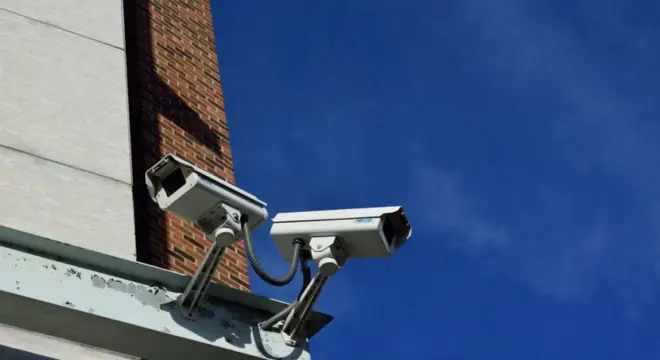Consumer Handbook: Delivery Scams – Your Guide to Staying Safe During the Holiday Season?
Have you ever lost a package or received a delivery message that seemed a bit off?
With the rising trend of online shopping, especially during the holiday season, delivery scams are becoming more common. Scammers are getting better at making their messages look real, making it harder to spot a scam.
Did you know that more than 1 in 4 people have had a package stolen, and phishing emails related to deliveries are on the rise? Let’s take a look at some incidents that have occurred.
Royal Mail scam emails have been reported over 5,000 times, leading to the removal of 337,672 scam websites as of June 2024.
The U.S. Chamber of Commerce found that more than ¼ of consumers have had a package stolen, with single-family homes being more vulnerable than apartments or condos.
Common Delivery Scams
Phishing Scams
Phishing scams are one of the most common ways scammers try to trick you. These involve fake emails or text messages that claim there is an issue with your delivery. They often include malicious links or forms designed to steal your personal information.
Examples of phishing tactics include:
- Tracking links that redirect you to fake websites designed to steal your personal data.
- Fake update forms asking for sensitive information like credit card details or passwords.
Now, let’s talk about another incident that happened: India Post Scam: Scammers impersonated the India Post Service and sent phishing texts asking recipients to pay bogus customs fees for their parcels. Victims unknowingly provided their banking details, leading to significant financial fraud.
Fake Missed Delivery Notices
Fraudulent missed delivery notices are another way scammers try to collect your personal information. These fake messages often look official, mimicking the communication style of trusted delivery companies.
How scammers attempt to collect personal information:
- They often ask for confirmation of delivery details or personal information like your full address or payment methods.
- Some messages include links that, when clicked, ask for sensitive data or lead to malware-infected websites.
Porch Pirates
“Porch pirates” are thieves who steal packages left outside homes, particularly when they are left on porches or doorsteps. This crime is more prevalent during peak shopping seasons when many deliveries are made.
Now, let’s talk about another incident:
Amazon Package Theft Incident: In one high-profile case, a woman in California reported having $3,000 worth of electronics stolen by a delivery driver who marked the package as “delivered.” After a month-long investigation, the company refunded her, but the incident highlighted the importance of having delivery insurance and signature requirements for valuable items.
Explanation of how thieves operate:
- Porch pirates often follow delivery trucks or track delivery times to steal packages as soon as they are dropped off.
- They target single-family homes more frequently, as they are often less secure and more likely to have packages left unattended.
Warning Signs of Delivery Scams
- Poor Grammar and Incorrect Branding in Messages: If the message contains spelling or grammatical errors, or if the branding doesn’t look professional, it’s a red flag.
- Unsolicited Emails or Texts: Be cautious of unexpected messages claiming to be from delivery companies or online stores, especially if you weren’t expecting a package.
- Unrealistic Claims or Urgency to Act Immediately: Scammers often create a sense of urgency, like “Immediate action required!” or “Your package is delayed, click here to resolve it now!” Always verify the message before acting.

Tips to Stay Safe During Holiday Deliveries
1. Track Deliveries Carefully
- Always use the tracking number provided by the seller or delivery service.
- Cross-check delivery details on the official website of the courier service to ensure they match the information you received.
2. Recognize Official Communication Channels
- Reputable delivery companies will contact you through their official channels like email or SMS from verified numbers.
- Be cautious of messages claiming to be from delivery companies but using unofficial sources or generic email addresses.
3. Avoid Clicking Unknown Links
- Never click on links in unsolicited emails or texts. Instead, type the web address directly into your browser or use the official app to check for delivery updates.
- Always verify any communication through the delivery company’s official website.
4. Use Secure Delivery Options
- For expensive items, request a signature upon delivery to prevent theft.
- Schedule deliveries for when you’re home or choose pick-up options if you’re unavailable.
- Consider using alternative delivery options like locker boxes or shipping to retail stores for added security.
5. Protect Your Packages from Theft
- Install visible security cameras or doorbell cameras to deter thieves from stealing packages left at your doorstep.
- Use motion-detecting lights, secure gates, or post a “Package Delivery” notice to keep your packages safe.
Case Studies of Delivery Scams
India Post Scam
- Scammers impersonated India Post, sending phishing texts requesting bogus customs fees. Victims unknowingly shared their banking details, leading to financial fraud.
Amazon Package Theft Incident
- A California woman had $3,000 worth of electronics stolen by a delivery driver who falsely marked the package as “delivered.” After an investigation, the company refunded her, highlighting the importance of delivery insurance and signature requirements for valuable items.
Analysis
- India Post Scam: Scammers use official-looking messages to trick consumers into giving personal information, leading to financial losses.
- Amazon Package Theft: Thieves exploit unmonitored deliveries, especially during busy seasons, resulting in lost or stolen packages. Secure delivery options are crucial to prevent such thefts.
Importance of Reporting Scams
Reporting delivery scams is crucial to help authorities investigate and prevent further incidents. By sharing your experience, you can protect others from falling victim to similar scams.
Where to Report Suspicious Delivery Scams
- Phishing Emails and Texts: Forward them to government authorities like [email protected] in the UK or [email protected] in the US.
- Fraudulent Delivery Websites: Report them to trusted organizations such as the FTC (Federal Trade Commission) or Better Business Bureau (BBB) in the US.
- Local Authorities: For package thefts or fraudulent delivery activities, contact local law enforcement agencies to file a report.
Steps to Assist Authorities in Scam Investigations
- Gather Evidence: Save any emails, texts, or screenshots of the scam communication.
- Track the Details: Keep a record of any interactions or transactions with the scammers.
- Notify the Delivery Service: Inform the delivery service involved in the scam to alert them about potential fraudulent activity.
- Share Your Report: File a report with your local consumer protection agency or online scam reporting platforms.
Conclusion
To stay safe from delivery scams, follow these key tips:
- Track Deliveries Carefully: Always use official tracking links and verify delivery details.
- Avoid Phishing: Don’t click on suspicious links or share personal information.
- Use Secure Delivery Options: Request signatures for valuable packages, or schedule deliveries when you’re home.
- Protect Your Packages: Install cameras and secure your porch to prevent theft.
By staying vigilant during the holiday season, you can enjoy stress-free shopping and protect yourself from scams. Feel free to reach out if you have any questions or need further assistance!


